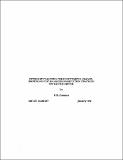| dc.description.abstract | In an effort to require electric utilities to assess the environmental impacts of
their activities, public utilities commissions nationwide have been turning to
the use of environmental externality valuation as a tool in integrated resource
planning. To date, policy discussions have focused predominantly upon the
correct value and calculation of externality adders, rather than their use and
applicability as a planning tool. This paper discusses the use and utility of
externality valuation for identifying low-cost, low-emissions electric service
strategies. Using data obtained from a broad based examination of New
England's electric service options, this paper compares the externality valuation
concepts with the information generally obtained from electric power system
simulation and production-costing analyses. While a valid economic concept,
the application of externality values is of little use in identifying which
strategies are both low-cost and low-emissions, or the specific policy options
required to ensure their implementation. Externality valuation should
therefore be used only as a last step, to select from among low-cost, low-
emissions strategies once the aggregate cost and emissions impacts of those
strategies have been identified. | en |
